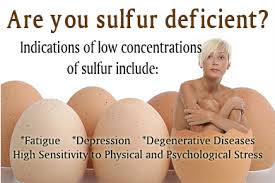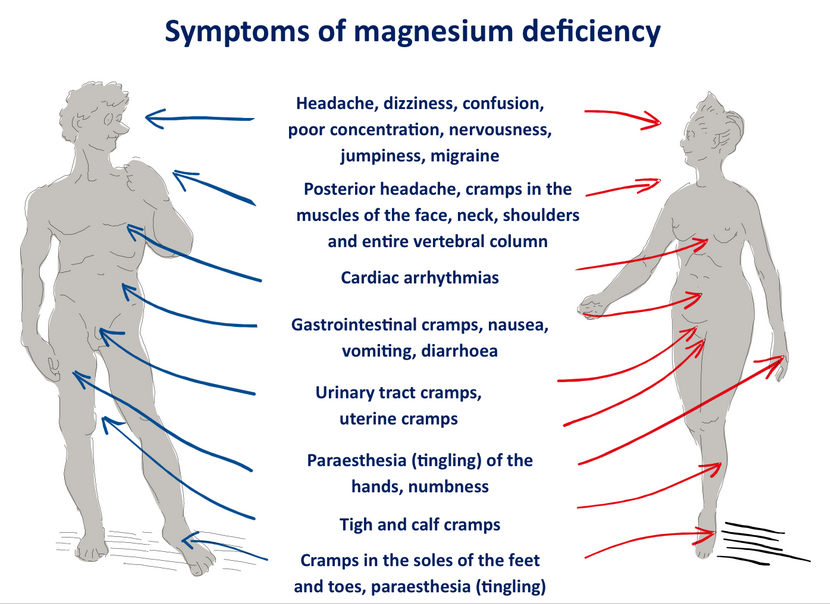The crucial role of Sulfur in health and glutathione
The crucial role of Sulfur in health and glutathione: Understanding the effectiveness of sulfur

The crucial role of Sulfur in health and glutathione must be taught across the board. indication of low sulfer include depression and fatigue.
In our daily effort in ensuring that our body is duly protected from the various attacks of the environment and other sources, the application of sulfur becomes very important. We all have a duty to keep healthy and that is why discussion about the crucial role of sulfur in health and glutathione becomes necessary. To start us off doctor Dalal Akoury a medical professional and founder of AWAREmed Health and Wellness Resource Center brings us up to speed about certain benefits of sulfur. She says that sulfur plays an important role in the formation of proteins. These protein chains are held together by peptide (disulfide) bonds provided by sulfur amino acid cysteine. And because our bodies are held together with proteins in all the connective tissues, without sulfur we would literally turn into a splash of cells and spread over the floor. Not forgetting that enzymes which are proteins are charged with the regulation and enhancement of most biochemical processes in our bodies but for this to be done effectively, the supply of sulfur is very necessary that will also include the glutathione enzymes.
The crucial nature of sulfur is that it enables the collagen which is the main constituent of cartilage that keeps our joints working properly.
Sulfur is the main constituent of protein keratin that our hair, nails and skin are made of. Sulfur is what gives them their shape, flexibility and strength.
As for the beauty of the skin, sulfur is responsible for keeping the skin cells flexible and permeable, thereby enabling our skin to serve certain roles of the kidneys as many toxins exit the body with sweat.
Sulfur is one of the raw materials, alongside amino acids and vitamins, necessary to create healthy new cells with flexible walls. This flexibility allows fluids to flow freely through the tissues in response to changes in atmospheric pressure. This reduces cell inflammation and pain sensations.
Sulfur is a component of insulin. A diet rich in sulfur containing foods may enhance the body’s ability to produce insulin and lower the dependency on injections in diabetic patients.
Sulfur and MSM (Methylsulfonylmethane) promote healthy digestive function by boosting digestive enzyme activity, building healthy lining tissue and promoting bowel activity.
Protein is the main structural component of myelin sheaths, the protective layer covering the nerves. Insufficient sulfur may cause demyelination to occur, especially in the presence of elevated oxidative stress or exposure to toxins that may trigger the onset of neurodegenerative diseases and peripheral neuropathy.
Sulfur is a component of vitamins B1 (thiamin), B5 (pantothenic acid that converts to coenzyme A) and B7 (biotin) required for the metabolism of fats, carbohydrates and glucose.
Sulfur is required for manufacturing of alpha lipoic acid in the body, an important antioxidant and a glutathione cofactor that has been shown to elevate glutathione levels.
MSM, an endogenous cellular metabolite that acts as sulfur donor in many trans-methylation reactions, is also able to act as an antioxidant and free radical scavenger.
And last but not least – sulfur is a critically active component in the reduced (active) form of a glutathione molecule (GSH). Sulfur sulfhydryl group is represented by “SH” in the common abbreviation for glutathione (GSH). It is the sulfur containing amino acid cysteine, the most crucial building block for glutathione that contributes sulfur to it. At low levels of intake cysteine is preferentially incorporated into proteins rather than glutathione. Thus, the availability of cysteine determines how much glutathione and how fast a cell can produce in response to a threat.
Sulfur is also what is responsible for glutathione’s antioxidant and detoxifying powers – free radicals, toxins, heavy metals, etc. “stick” to sulfur to be eliminated from the body.
Organic sulfur as sulfur containing amino acids can also increase the
synthesis of S-adenosylmethionine (SAMe) in the body. SAMe is a form of methionine partially converted to cysteine that cells can use in the synthesis of glutathione. Synthetic SAMe is also a pharmaceutical drug that is used in the treatment of liver diseases and in Europe as a mood stabilizing medication.
The crucial role of Sulfur in health and glutathione: Methylsulfonylmethane
It was reported that MSM may also be used as a precursor for the synthesis of methionine and cysteine, and act as a source of sulfur which may induce new GSH synthesis. Methyl Sulfonyl Methane, better known as MSM, is a naturally occurring sulphur compound that may play a role in the synthesis of glutathione (GSH), one of the most important intracellular antioxidants, through its transulfuration pathway.
As we continue into the discussion, it is important to note that sulfur amino acid insufficiency compromises glutathione synthesis, to a greater extent than hepatic protein synthesis, in the presence and absence of an inflammatory stimulus. The resulting effect may be compromised antioxidant defenses. Functioning of T cells is dependent on intracellular glutathione concentrations and may also be affected by sulfur amino acid insufficiency. And finally on this is that part of MSM’s action is to improve your body’s ability to make its own antioxidants.
The crucial role of Sulfur in health and glutathione: Who may benefit from taking MSM supplement?
Vegetarians and vegans may be at high risk of sulfur deficiencies because of the lack of sulfur-rich animal foods in their diet and the normal processing of plant foods that destroys MSM, although cysteine and methionine are present in some plants. Those who favor these eating styles may benefit from taking MSM supplement.
People who do not consume sufficient amounts of sulfur rich foods and eat mostly processed foods will benefit from taking supplemental MSM.
MSM supplement may be beneficial to those on a protein restricted diet, for example due to kidney disease.
MSM has been used extensively to relieve arthritic pain, joint pain, back pain, migraines, skin conditions, allergies, autoimmune diseases, digestive issues, and to promote the healing of burns and scars. It may be beneficial for people with these health conditions.
Athletes, both professional and amateur, may find MSM supplement helpful in the process of healing sports related joint injuries and for faster recovery. Research also indicates that insufficient intakes of sulfur amino acids during training may promote inflammation.
MSM supplement may help maintain glutathione levels by improving alpha lipoic acid levels, by helping decrease inflammation and oxidative stress, by participating in the metabolism of cysteine and methionine, and by contributing the continuous supply of sulfur for many vital processes in the body. This supplement may be useful to those interested in optimizing their glutathione levels.
The crucial role of Sulfur in health and glutathione: Dosages for the MSM supplement
Finally for a typical maintenance dose of supplemental MSM is 1,000-3,000 mg a day. However the MSM supplements will always come in capsules and in powder form, the latter being more cost-efficient for larger doses. The effectiveness of a dose depends on the severity of a condition and the length of time the MSM supplement is taken. It may take up to 2 months of daily use to notice any health benefits. For further needs you may want to schedule for an appointment with doctor Akoury today.
The crucial role of Sulfur in health and glutathione: Understanding the effectiveness of sulfur











 Magnesium is found in a number of food products that can be found readily in the market. Foods high in magnesium include nuts, dark leafy greens, seeds, beans, fish, bananas, whole grains, dried fruit, avocados, yogurt and dark chocolate. This is however not the entire list of foods rich in magnesium. There are a lot of other products that contain magnesium in large amounts. These can be found at AwareMed. In fact, AwareMed is the best place where you can purchase magnesium.
Magnesium is found in a number of food products that can be found readily in the market. Foods high in magnesium include nuts, dark leafy greens, seeds, beans, fish, bananas, whole grains, dried fruit, avocados, yogurt and dark chocolate. This is however not the entire list of foods rich in magnesium. There are a lot of other products that contain magnesium in large amounts. These can be found at AwareMed. In fact, AwareMed is the best place where you can purchase magnesium. Genetically Modified Food (DNA)
Genetically Modified Food (DNA)












